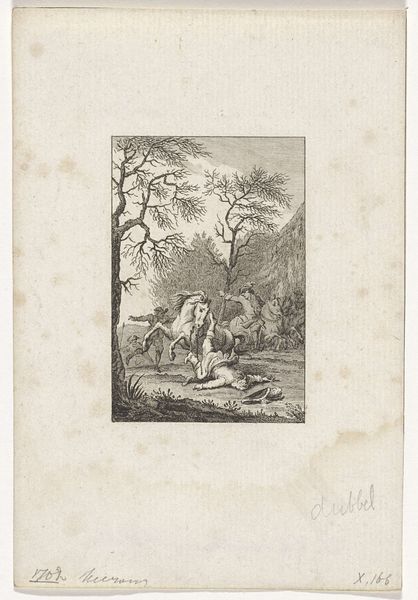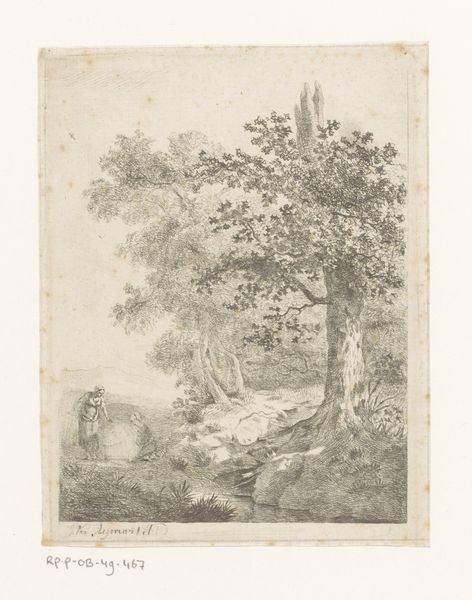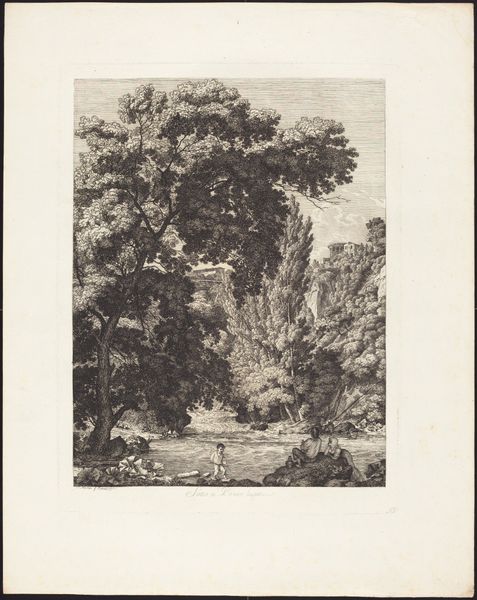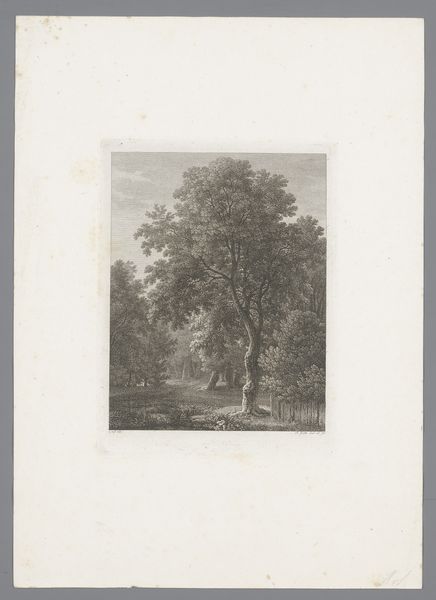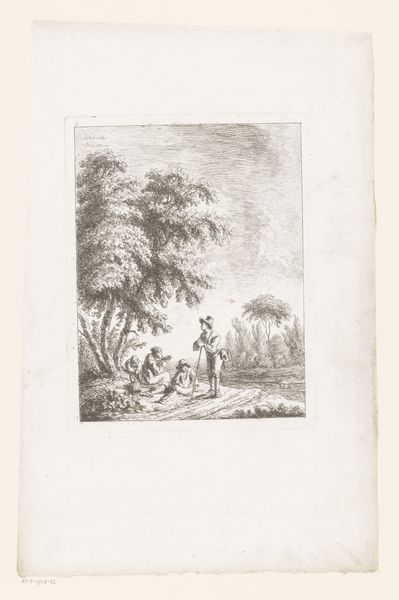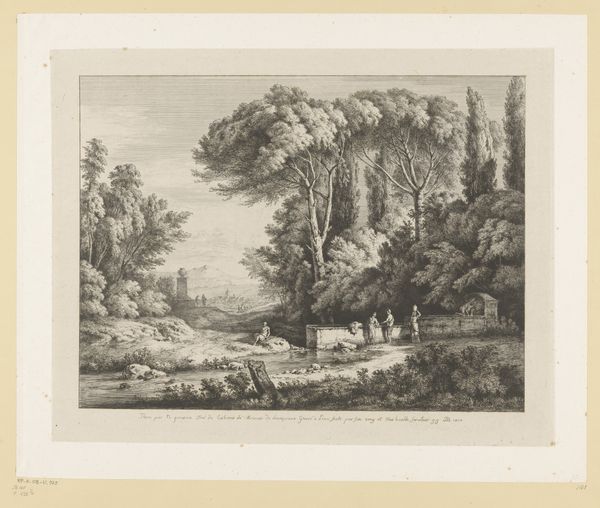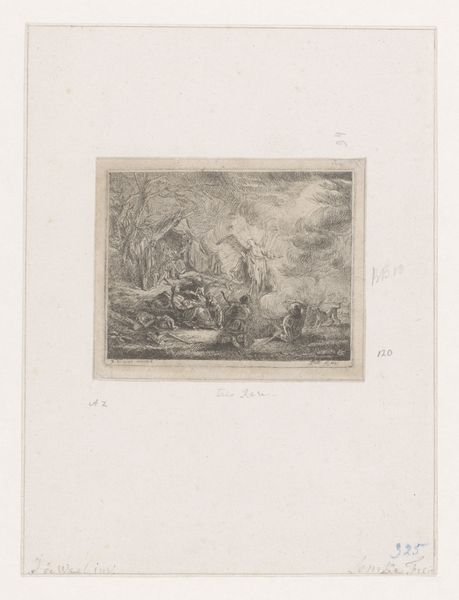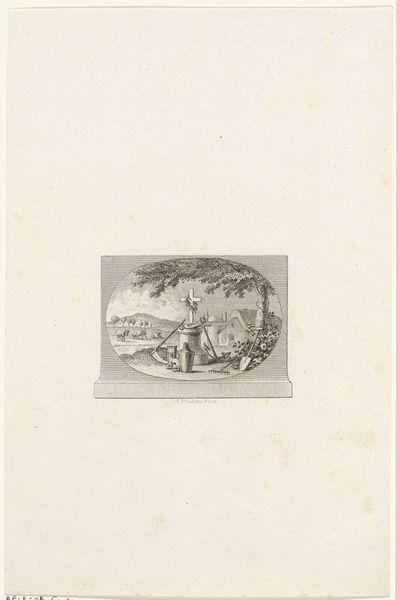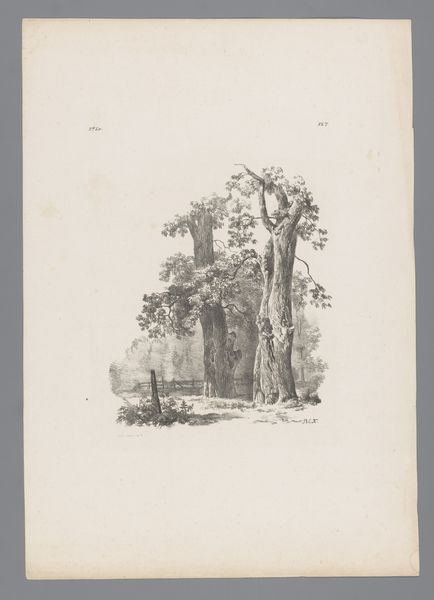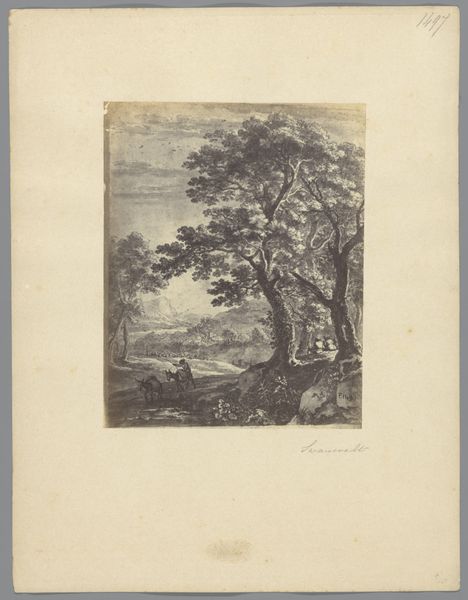
Normandisch landschap met koeien en verstrengelde knotwilgen boven een beek 1849
0:00
0:00
print, etching
# print
#
etching
#
landscape
#
realism
Dimensions: height 448 mm, width 313 mm
Copyright: Rijks Museum: Open Domain
Curator: Here we have Auguste Paul Charles Anastasi's "Normandisch landschap met koeien en verstrengelde knotwilgen boven een beek," or "Norman Landscape with Cows and Entangled Willows over a Brook," etched in 1849. Editor: It strikes me immediately as quite bucolic, almost yearning. The entangled willows frame the brook beautifully, lending a sense of seclusion. Curator: Indeed. Anastasi masterfully employs etching techniques to render a highly detailed composition. Notice how the interwoven branches create a dense texture, contrasted by the smooth surface of the water. The pastoral scene aligns with the Realist movement's focus on depicting everyday life. Editor: And there's a subtle yet potent symbolism here, wouldn't you agree? The twisted willows seem to echo the complexities of human existence, while the gently flowing brook represents the passage of time. Even the cows serve a purpose—perhaps embodying rustic serenity and agrarian values prevalent during the mid-19th century? Curator: Historically, we can read the landscape as reflecting the Romantic interest in nature, but with the emerging realist concerns of its own time, in response to the growing industrialization in Europe. Prints became widely accessible to the middle class, reflecting not just a patron's taste but public consumption and accessible cultural trends. Editor: I'm fascinated by the distribution of light and shadow across the composition. The darker foliage in the foreground seems to draw the eye towards the more brightly lit pasture in the distance, thereby creating depth and contrast within the plane of the etching. It invites the viewer to traverse from immediate tangibility towards an elusive, perhaps idealized pastoral realm. Curator: Absolutely, the composition plays with perspective. One could read the contrast in light as invoking ideas of public versus private or near versus far, a key element of landscape theory through the 19th century. It brings the viewer right into the moment of reflection, in looking upon the pastoral scene. Editor: I agree wholeheartedly! It leaves me pondering the intersection of nature and industry, or tradition and progress. Curator: For me, I value its formal tension, which continues to invite new views even centuries later.
Comments
No comments
Be the first to comment and join the conversation on the ultimate creative platform.


